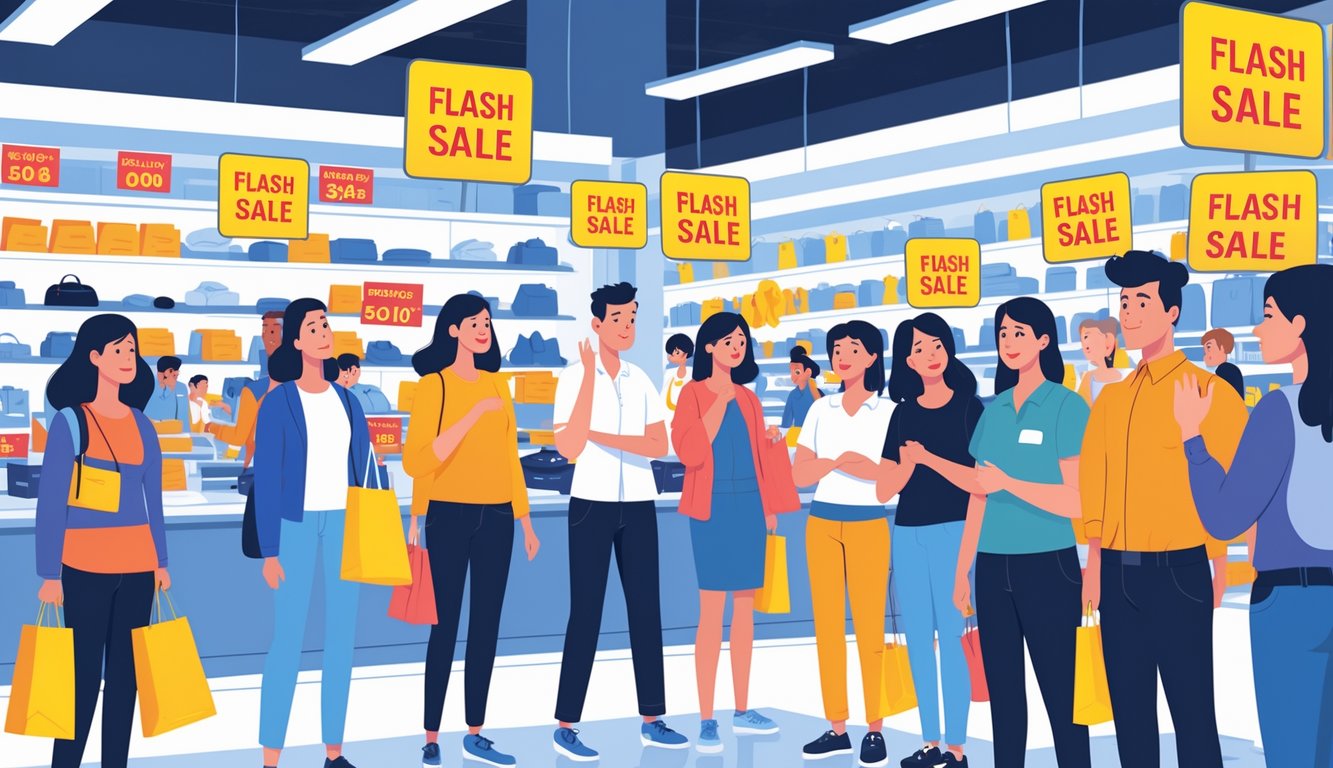
The Psychology of Scarcity and Urgency in Sales
Classic shopping chaos, right? Scarcity, urgency, someone yelling “last one!” and suddenly I’ve got a cart full of junk I didn’t even want. It’s not random, though—these are straight-up tactics, pushing your brain into overdrive with all the psychological tricks. Commodity theory, reactance theory, whatever. I’ve watched social media light up and digital platforms turn into pressure cookers—critical thinking just evaporates.
Fear of Missing Out (FOMO)
FOMO. Don’t get me started. There’s a sneaker drop, everyone’s glued to their phones, limited quantities flashing. I swear, nothing motivates people like “Only 12 left!”—suddenly, it feels like the world ends if you don’t buy. That’s just scarcity playing you.
Supposedly, over 60% of online shoppers (2024 report, which I lost, oops) admit they buy during flash sales just to not be left out. Do they even need it? Doesn’t matter. Brands crank up the exclusivity with timers, live notifications, fake “recent purchases.” Half the time, I buy the wrong size—urgency just fries logic.
Psychological Triggers and Decision-Making
Look, the triggers aren’t rocket science. Commodity theory makes anything scarce seem valuable. Ever see “People are viewing this right now”? Suddenly, you want it. Social proof, time-sensitive deals, all those little tricks. I’ve run digital campaigns—customers ignore details, just race to checkout before the timer hits zero. Totally irrational, but that’s the game. One client’s conversion rate jumped 31% in a single day after we turned on urgency tools—anchored pricing, fake stock counters, the works. Waiting for “rational” shopping? Good luck. Urgency always wins. Even high earners fall for it.
Marketing Strategies for Engaging Customers Without Flash Sales
Trying to get anyone’s attention online now? It’s a mess. Flash sales are banned, shoppers are still chasing codes, and brands are desperate to stand out. Everybody’s testing push alerts, influencers, whatever—just trying to keep people from bouncing to the next shiny offer.
Email Marketing and Push Notifications
Unsubscribes? Brutal. My subject lines get boring, I lose 17% of a segment in a day. “So Fresh!” flopped, “Your 24-Hr Offer Is Here” did better. Timing is everything. Push notifications at 3am? Useless. Apple says open rates drop below 10% after the first hour. Lost a bet on that in December, still annoyed.
Automated emails? Sometimes gold, sometimes just spam. Only works if you sneak in something people actually care about. A fashion retailer told me they ditched discount codes for “Trend Drop Mondays” with outfit tips—clicks up 32%. If you show up with something useful (like, “Winter boots just landed, rain’s coming”), you get attention without slashing prices. SEO-optimized content paired with transactional alerts? Always outperforms straight-up discounts.
Oddly, ugly, plain-text emails with a random tip get more replies than glossy ones. No hard proof, but my reply rates don’t lie.
Influencer and Social Media Campaigns
Instagram Reels—can’t escape them. I worked with a shoe brand, and the only viral post was a sloppy 7-second unboxing, not the expensive pro shoot. Micro-influencers (5k to 50k followers) actually drive traffic—one sent 600 new customers on a random Tuesday, no ad budget. Wouldn’t have guessed.
Sometimes, paid partnerships flop. Brands keep pushing the same tired “collab” posts instead of letting influencers be weird, honest, or just break stuff. When campaigns riff on memes or real FAQs (“Can I wear loafers with shorts?”), engagement spikes. No idea why. Someone’s grandma commented that loafers are just slippers, and the post blew up.
Instagram Stories with countdowns or polls—yeah, I stole that from this list—they push urgency, but only if they’re interactive. If there’s no brand awareness, people just scroll by. I track what flops (nobody cares about “behind the scenes”) and what hits (“show us your weirdest WFH outfit, tag us, get a feature”). Loyalty sneaks in when people laugh or see friends, not from another “doorbuster.” I’ve spent nights watching analytics hoping for a spike—sometimes all it takes is a dumb poll.



